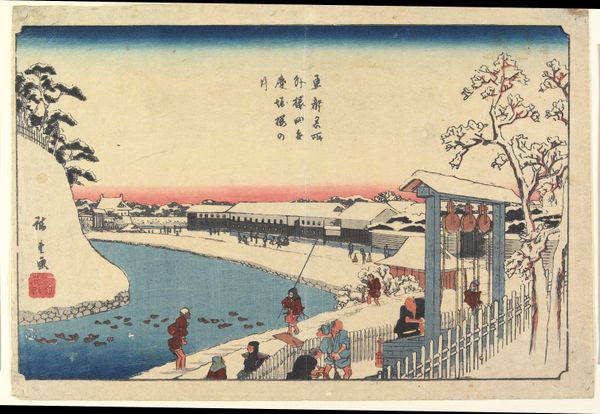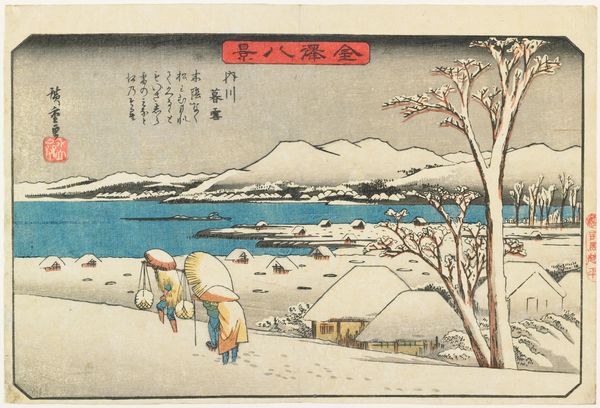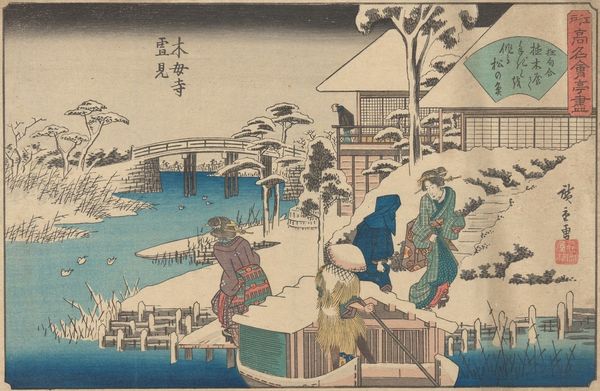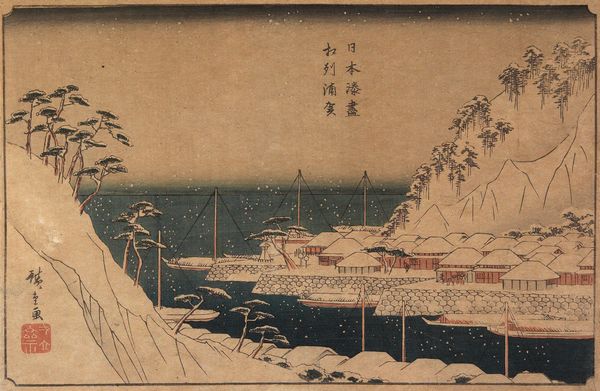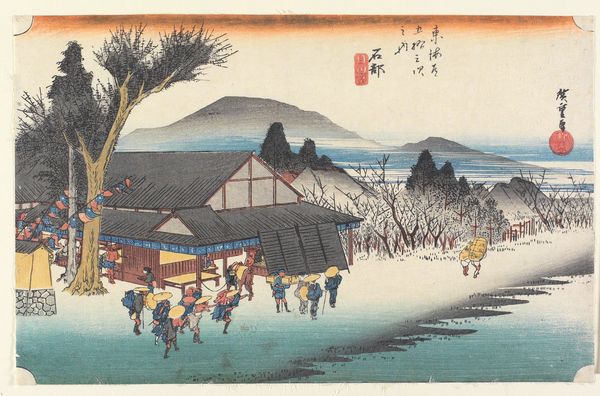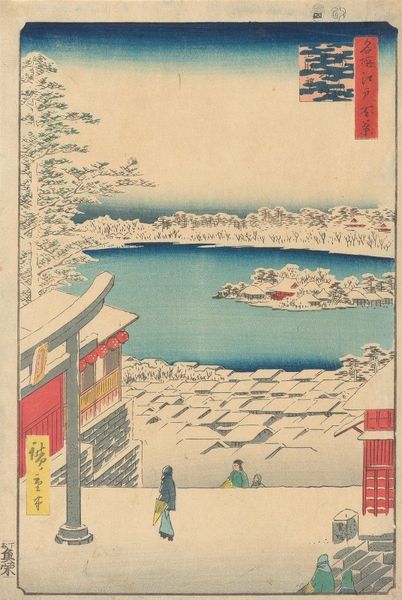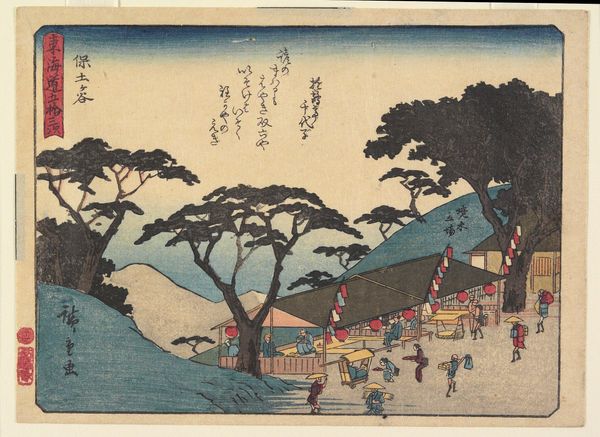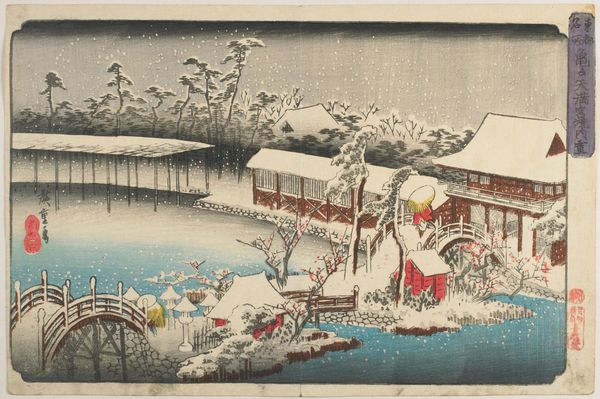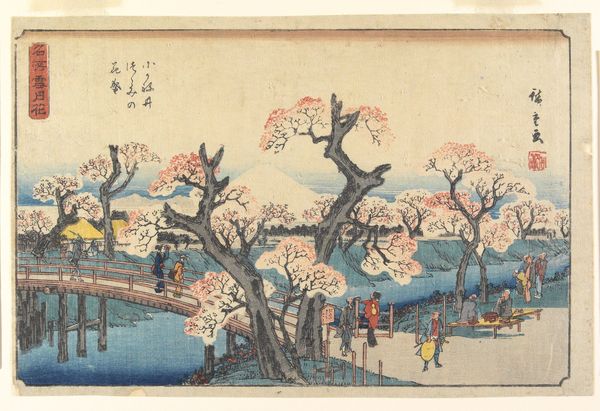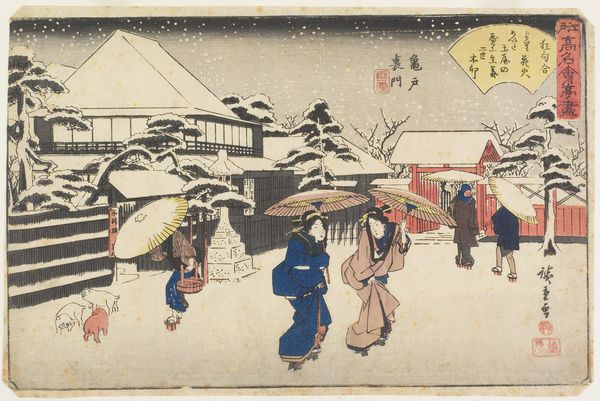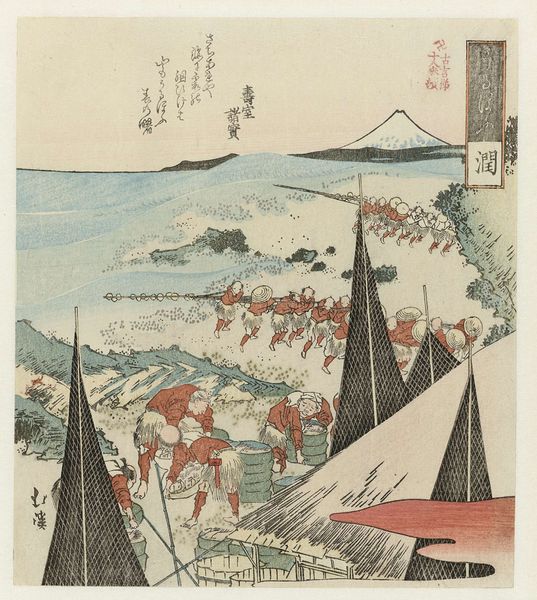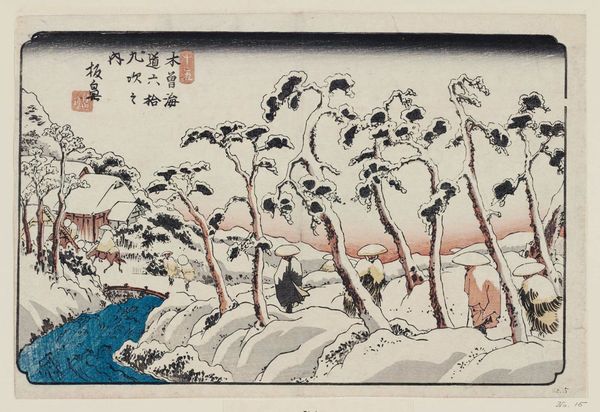
print, ink, color-on-paper, woodblock-print
#
toned paper
#
water colours
# print
#
asian-art
#
landscape
#
winter
#
ukiyo-e
#
japan
#
handmade artwork painting
#
personal sketchbook
#
ink
#
color-on-paper
#
wedding around the world
#
woodblock-print
#
watercolour bleed
#
watercolour illustration
#
cartoon carciture
#
sketchbook art
#
watercolor
Dimensions: 8 9/16 × 13 3/8 in. (21.8 × 34 cm) (image, horizontal ōban)
Copyright: Public Domain
Curator: Here we have Utagawa Kunikazu's "Snow at Matsuchiyama," a woodblock print likely created between 1847 and 1851. It’s part of the collection here at the Minneapolis Institute of Art. Editor: What immediately strikes me is the stillness, despite the visual flurry of falling snow. The bright blue river offers such a stark contrast with the muted tones everywhere else, too. Curator: The perspective, the viewpoint above the Sumida River, gives us an interesting insight into Edo-period leisure and travel, doesn’t it? These prints were quite affordable, effectively democratizing art for the masses. Editor: I'm wondering about the paper itself, it looks like toned paper. I imagine the layers upon layers of the block printing technique-- the textures of the woodblock coming through. It looks quite labour intensive to get the layering of colour correct. Curator: Absolutely. This type of print relies on the close collaboration between the artist, the woodblock carver, and the printer, it was quite a cottage industry. It points to the distribution networks inherent in Ukiyo-e prints too-- making accessible what was otherwise distant and rare to view. Editor: Thinking about materials, I'm curious about the source of those pigments. How were those vivid blues and reds created at the time? And how did these prints circulate beyond Japan, influencing artistic styles globally? It reminds me of artisanal textiles-- such highly refined craftwork in each print! Curator: These prints offered idealized scenes, promoting certain views of landscape and culture. But the commodification of those scenes also reflects the urban, consumer culture that defined much of Edo society at the time. They're far more than pretty pictures. Editor: I suppose when we look at "fine art", what really grabs me here are the means of production behind it: The skilled labor, material sources and distribution networks… How things are actually MADE. Curator: Exactly. It brings those often hidden aspects to the foreground, it’s really about broadening our definition of art and artistic influence beyond individual genius. Editor: Thanks for opening my eyes to the context that shaped these prints, its transformed my appreciation entirely. Curator: Likewise, thinking through the labor and networks of materials allows me to appreciate their popularity. A beautiful lens that we all benefit from considering when we study these beautiful objects.
Comments
No comments
Be the first to comment and join the conversation on the ultimate creative platform.
